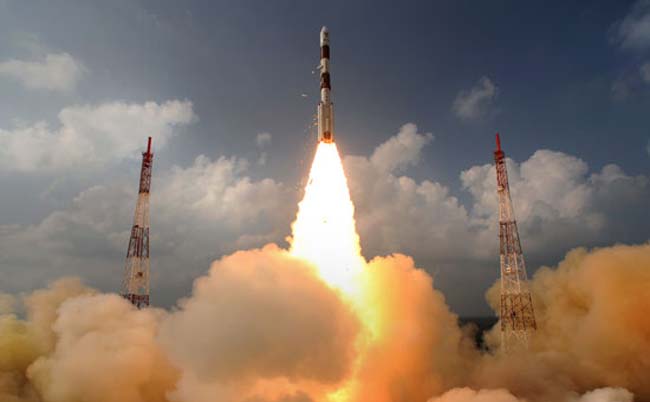Amidst intense speculation and debate, India’s mission to Mars called Mangalyaan was launched on Nov. 5, 2013. The project has been the result of the efforts of over 500 scientists over a period of roughly 15 months.
Around 44 minutes after the launch, Mangalyaan entered the Earth's orbit marking the completion of the first and fairly decisive phase of its journey. About 2100 seconds after the launch, at 2.38 pm IST from the Sriharikota spaceport the orbiter detached from its launch rocket.
As reported by NDTV, the launch rocket " placed the Mars Orbiter spacecraft very precisely into an elliptical orbit around Earth," the chairman of the Indian Space Research Organisation (ISRO) K. Radhakrishnan quoted from the control room.
The size of a small car, the spacecraft will travel around the orbit of the Earth for roughly a month and generate the velocity required to break free from the gravitational pull of the Earth. This is going to be the next important step in the project leading to the initiation of its nine-month long, highly trying voyage for ISRO scientists.

Pic Credit – daily.bhaskar.com
After ISRO’s successful probe to the moon in 2008, all eyes are on Mangalyaan now. The spacecraft is programmed to enter the orbit of Mars on Sept. 24, 2014. It will then collect images of the planet’s landscape, gauge weather patterns and probe for traces of methane.
Apart from being a technological accomplishment for India, Mangalyaan is also being viewed as an economical one, considering it was undertaken with a small budget of merely $72 million USD compared to NASA’s upcoming Mars probe with the same objective which will cost the $671 million USD.
While many see the success of the launch as a significant achievement the project is not free from criticism. The official Chinese media is reported to have contended that India’s ambitious enterprise is an attempt to overtake the country's space programme.
The Global Times daily has reportedly alleged that India sent the expensive probe to Mars in spite of the towering problem of poverty to secure a one-up against China.
Following the successful launch, the craft has now been pushed further away from Earth.
Dr MYS Prasad, Director of the Satish Dhawan Space Centre, Sriharikota, told NDTV that "On the night of November 30, the final firing operation will be conducted which will make the satellite escape the Earth's gravity and travel towards Mars”.
In the past, only U.S.A, Russia and Europe have had successful missions to Mars. In the light of the failure of similar projects of other countries to send satellites or orbiters to Mars, the success of Mangalyaan will no doubt create significant influence of India’s position on the world map.
What do you think of this milestone for India? Share your views on the launch with us by tweeting @anokhi_meda or commenting below.
Source: Ndtv.com, Thediplomat.com, Articles.timesofindia.indiatimes.com
Feature Image: Material4appsc.wordpress.com














































































































